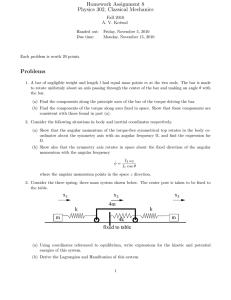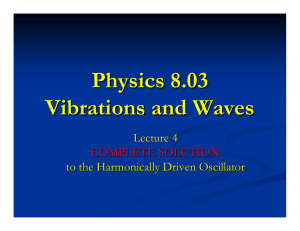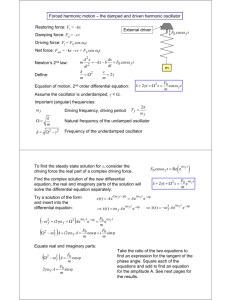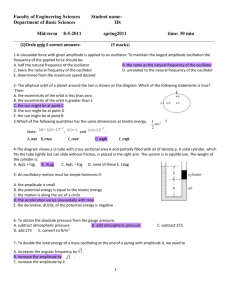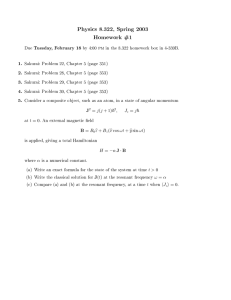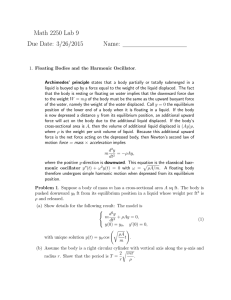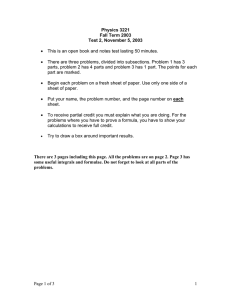PHY 6646 Spring 2003 – Homework 8
advertisement
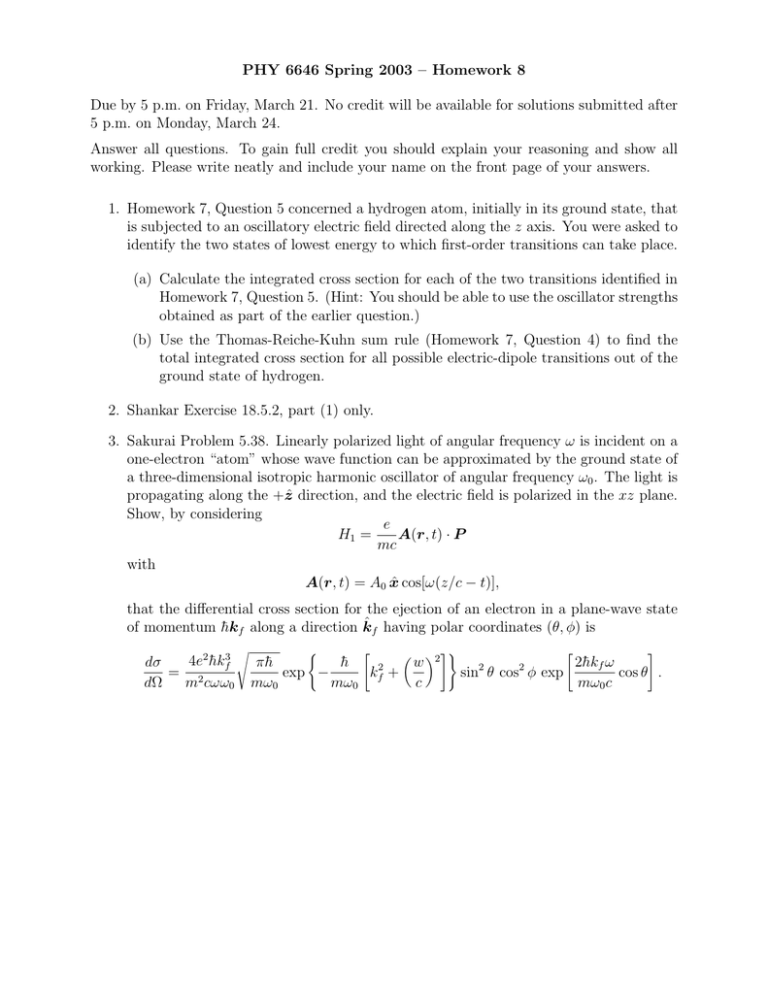
PHY 6646 Spring 2003 – Homework 8 Due by 5 p.m. on Friday, March 21. No credit will be available for solutions submitted after 5 p.m. on Monday, March 24. Answer all questions. To gain full credit you should explain your reasoning and show all working. Please write neatly and include your name on the front page of your answers. 1. Homework 7, Question 5 concerned a hydrogen atom, initially in its ground state, that is subjected to an oscillatory electric field directed along the z axis. You were asked to identify the two states of lowest energy to which first-order transitions can take place. (a) Calculate the integrated cross section for each of the two transitions identified in Homework 7, Question 5. (Hint: You should be able to use the oscillator strengths obtained as part of the earlier question.) (b) Use the Thomas-Reiche-Kuhn sum rule (Homework 7, Question 4) to find the total integrated cross section for all possible electric-dipole transitions out of the ground state of hydrogen. 2. Shankar Exercise 18.5.2, part (1) only. 3. Sakurai Problem 5.38. Linearly polarized light of angular frequency ω is incident on a one-electron “atom” whose wave function can be approximated by the ground state of a three-dimensional isotropic harmonic oscillator of angular frequency ω0 . The light is propagating along the +ẑ direction, and the electric field is polarized in the xz plane. Show, by considering e H1 = A(r, t) · P mc with A(r, t) = A0 x̂ cos[ω(z/c − t)], that the differential cross section for the ejection of an electron in a plane-wave state of momentum h̄kf along a direction k̂f having polar coordinates (θ, φ) is 4e2 h̄k 3 dσ = 2 f dΩ m cωω0 s ( " h̄ πh̄ w exp − kf2 + mω0 mω0 c 2 #) " # 2h̄kf ω sin θ cos φ exp cos θ . mω0 c 2 2
